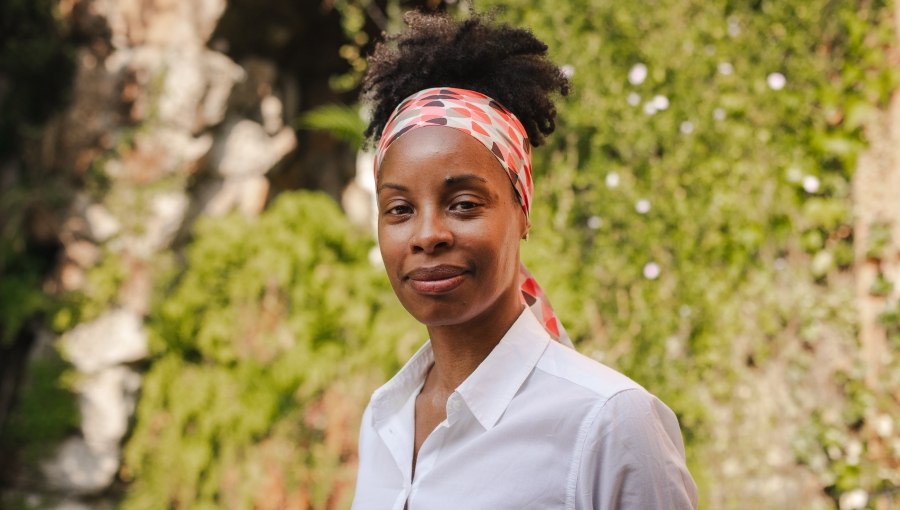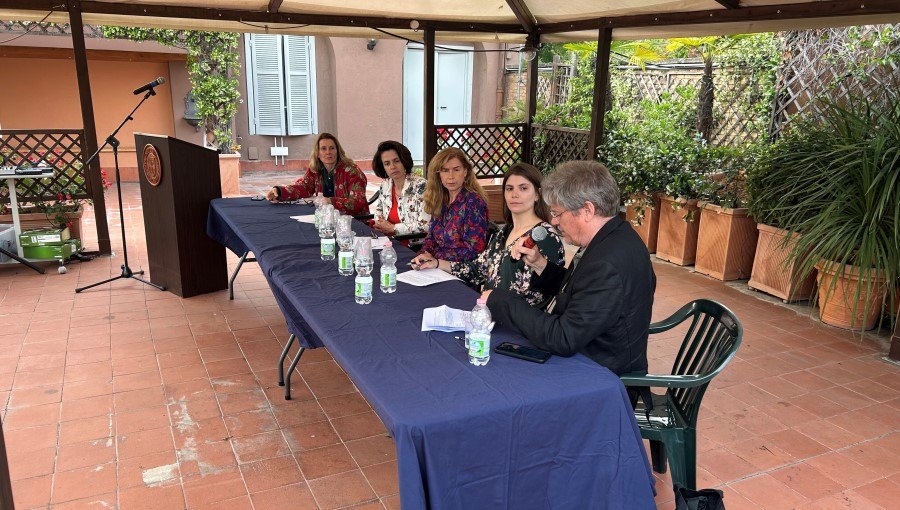Digital Delights and Disturbances: From Hybrid Learning to Zoom Fatigue
On April 15, the JCU Department of Communications hosted the latest lecture of the Digital Delights and Disturbances Series, “From Hybrid Learning to Zoom Fatigue: Logging on and Checking out.” The guest speakers were Gabriella Coleman (Wolfe Chair in Scientific and Technological Literacy at McGill University), Geert Lovink (Founding Director of the Institute of Network Cultures), and Shannon Mattern (Professor of Anthropology at The New School for Social Research). The John Cabot Student Government also attended the event.

“From Hybrid Learning to Zoom Fatigue” Event poster
After introducing the speakers, Communications professor Donatella Della Ratta talked about her experience teaching from remote, with reference to her recent essay “Teaching into the Void.” She discussed the anxiety and sense of fatigue that come with constantly seeing one’s own image reflected on the screen. This feeling of constriction into the geometric shape, she argued, is a result of the “tyranny of the rectangle.”
The Zoom, doom and gloom phenomenon
When asked about her experience with online teaching, Gabriella Coleman said: “I felt like I was thrown on the floor, and all the expertise I had was suddenly gone.” Initially, she felt like she was unable to lecture. It got to the point where online teaching felt almost painful because she was developing a sort of “impostor syndrome.” Slowly, the “Zoom, doom and gloom phenomenon” started to weigh less on her shoulders, and things improved. At the end of her talk, Coleman showed a video that she uses to introduce her online classes: Boomerang, a 1974 video performance by American Land Artist Nancy Holt, in collaboration with Richard Serra. In the short clip, Holt is shown wearing a pair of headphones that play her voice back after she speaks. It is a disorienting experience for both the watcher and Holt herself. She can hardly pronounce words as they are played back into her ears. To Coleman, that is the same disorienting feeling generated by online learning.
Shannon Mattern explained how online learning platforms can be used to “add a new dimension to classes.” She mentioned how remote learning has allowed students who were not comfortable speaking in class to find their own voice. By attending class from the comfort of their homes, many students felt more at ease participating in the online activities. She also pointed out how the chat tool provided by online learning platforms has proved to be useful to those who prefer to write down their thoughts. During her experience teaching online, Mattern noticed an increasing sense of collaboration and solidarity in the class. She also learned how to be more supportive of her students. “It got to a point where I had meetings with students every day, all day. Many were in different time zones, so I had to make sure to find a way to accommodate everybody’s needs.”
Image crafting and risks of class recording
Student Government Events Coordinator Camilla Alessi asked the speakers about the “performative aspect of online learning.” On social media, people present a picture-perfect version of themselves. However, when students have to show themselves with no filters and through their laptop’s cheap camera, their confidence “crumbles.” For this reason, many pretend to have connection issues, as an excuse to keep the camera off. Geert Lovink believes that what makes online learning different from social media is that it leaves no space for image crafting. On social media, people share just one picture of themselves. In fact, “the self is an ongoing production of pictures, it is about the constant reproduction of self-images.” That is what the camera of Zoom, Teams, or Classroom shows. Coleman agreed with Lovink and added, “Stuff happens while you are on the screen, and that’s an incredibly humanizing factor, it’s something that we weren’t used to seeing before.” She talked about her experience of having to watch herself teaching classes while being hyper-aware of all her physical imperfections. Mattern added that the secret is learning to accept a certain degree of imperfection in everyday life. “Maybe you’re attending class and your baby starts crying or your dog won’t stop barking, and that’s ok.”
Another issue discussed during the event was the recording of classes. On the one hand, it can help with accessibility. If a student, for instance, is in a different time zone, recorded classes can be a useful tool to avoid following lectures at inconvenient times. On the other hand, it can be a limiting practice for both teachers and students. Whenever she records classes, Coleman is more aware that she will be observed by a number of people. She has noticed that this feeling affects the way she speaks. She tends to be more “conservative” and chooses words differently. She added that professors also experience a sense of anxiety deriving from the rise of groups like Campus Reform in the United States, where students are encouraged to record and expose their liberal professors. Professors Della Ratta and Coleman agreed on the need to increase the production value of recorded classes. Professor Della Ratta believes that creating a comfortable and stimulating environment is key to the success of formative experiences. Using closed-circuit television cameras to stream and record classes fails to create such an environment since they evoke a feeling of censorship and surveillance for both the professors and the students following from remote.
John Cabot University President Franco Pavoncello commented on the impact of Covid on higher education. “I often find myself wondering how I would have felt if I had been robbed of my university years. I think the resilience our students have demonstrated and are still demonstrating is admirable. Exactly 100 years ago, the Spanish Flu spread across the world. It came in the spring, disappeared during the summer, and returned in the fall, to then vanish all of a sudden. After the Spanish Flu came the Roaring Twenties, a time of incredible vitality and energy. Let’s keep a positive perspective about the days to come. I have a feeling that we’ll soon get back to life as we knew it.”





